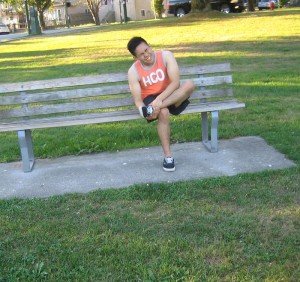When a fracture on the distal tibial growth plate occurs, it usually involves a break in one of the large shin bones at the growth plate located at the end part of the ankle bone. These fractures typically occur among children and adolescents before the bone in the area fully hardens.
Symptoms
A tibial growth plate fracture is likely to occur after a traumatic incident such as a fall or twisting of the ankle. The individual will have difficulty in bearing weight and attempting to move the ankle will be painful. The swelling is likely to develop rapidly. In case the injury is severe, deformity in the ankle can be evident from the displaced fracture.
When it comes to fractures, it is important that you know how to provide first aid care before medical care is sought. To learn to recognize and manage bone injuries including fractures, register for first aid training here.
Close look on a tibial growth plate fracture
The long bones such as tibia can grow from the ends in areas called as growth plates. Among children, these are areas of developing cartilage which harden as they start to age and reach their full height. The growth plates are the last part of the bone to ossify or harden and face a higher risk for fracture.

Among children, an ankle injury is likely to trigger a growth plate fracture. A tibial growth plate fracture typically occurs after a fall either while running or from a bike or play equipment. This will result to abrupt pain and difficulty in bearing weight. On the other hand, growth plate fractures can also be overuse injuries triggered by constant strain such as during long distance running or certain sports such as gymnastics. In such cases, the pain develops gradually and the child will complain of pain during activity that eases with rest.
Treatment
In case a fracture is suspected, a doctor should be consulted as soon as possible. An X-ray will be taken to diagnose the injury, but since the growth plate is still cartilage, it might not show up. Due to this, an MRI can provide a better result.
The treatment depends on the severity of the fracture and if there is any displacement. When it comes to minor fractures, casting is required to immobilize the joint for 4-6 weeks. Fractures in which bones are displaced require mobilization either manually using the hands to manipulate them back in place or through surgery. In addition, a cast is used so that the bones can heal in place.
As for severe cases, parts of the bone are compressed together during surgery. After the immobilization phase, exercises must be carried out in order to restore full movement, balance and strength.
